Wild weather fluctuations, first snow – transitions in late fall.
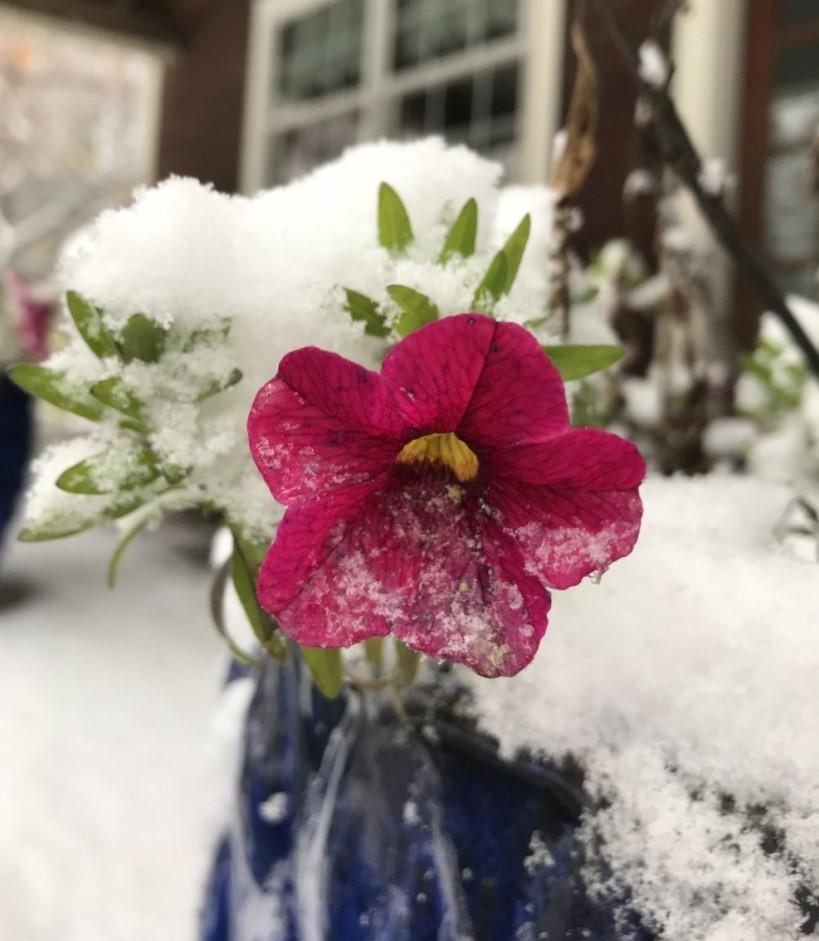
First snowfall is a "shot across the bow" for those not yet prepared.
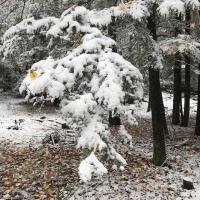
New Hampshire’s ever-changing weather and scenery drive the NH tourism economy and collective mood swings. Beyond the recent tumult of politics and pandemic, the forest offers an antidote: a sense of place, personality and yes, poetry.
Pity the residents of sunny-year-round locales — those states sans seasons Our summer and winter have steady personalities, predictable character traits. The shoulder seasons of spring and fall exhibit errant mood swings, notorious fluctuations — even tantrums.

By November, the riotous foliage tapestry is torn. “Past peak” — ouch. The fall-back from Daylight Savings Time ushers-in a unique November mood that follows Halloween into weeks of low-angle, slanting sunlight and pink-tinged clouds at dawn and too-early dusk by late afternoon. Mild autumn weekend mornings perfect for finishing pre-winter chores may be punctuated by days of wind-driven snow squalls. This fitful season is a pensive time for turning inward. Hardy residents reflect what US Poet Laureate Poet, Robert Frost once termed “inner weather.”
The subtle beauties of darkening November are an acquired taste rarely celebrated in tourism promotions. Robert Frost wrote:
My November Guest
My sorrow, when she’s here with me,
Thinks these dark days of autumn rain
Are beautiful as days can be;
She loves the bare, the withered tree;
She walks the sodden pasture lane.Her pleasure will not let me stay.
She talks and I am fain to list:
She’s glad the birds are gone away,
She’s glad her simple worsted grey
Is silver now with clinging mist.The desolate, deserted trees,
The faded earth, the heavy sky,
The beauties she so truly sees,She thinks I have no eye for these,
And vexes me for reason why.Not yesterday I learned to know
The love of bare November days
Before the coming of the snow,
But it were vain to tell her so,
And they are better for her praise.
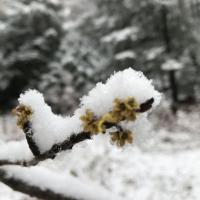
The gaudy gold and crimson foliage of maple, birch and aspen are past. The forest feels forlorn: stark “stick season” landscape. Views into surrounding woods expand. Distance shrinks and bitter cold descends. Glossy green conifers provide new contrasts. Tiny ferns and mosses are now revealed. Native witch hazel shrubs provide the last, tiny flowers.
One unique conifer loses all its needles in autumn — Tamarack aka “Larch” or more colorfully “Hackamatack” in Maine. It glows brilliant yellow for a week each November. Its preferred habitat is wetlands, bogs and wooded swamps. A contrary-wise rebel in the evergreen clan, Tamarack is a deciduous conifer, dropping its needles before winter.
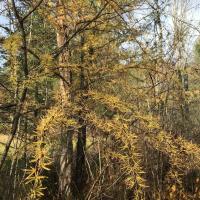
Late foliage season — after the fall — is still beautiful with colors and textures more subtle and nuanced. Upland oaks and beeches retain their leaves. Red Oak, White Oak and Beech leaves rattle in the wind sporting shades of russet, rust and coppery brown. The “past peak” leaves contrast the dark-green hemlocks and pale green of White Pines all of which are ripe with second-year cones this autumn.
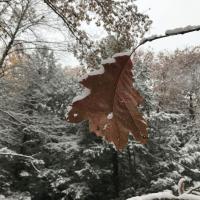
Oaks and Beech trees are relative newcomers to New England, first appearing in the post-glacial pollen record of peat bog cores just 4000 years before present. The tendency to retain leaves is due to a slower process of forming a corky “abscission layer” at the base of leaf stems and belies relative newcomer status. It takes centuries to learn to prepare for winter. Ask any old-timer.
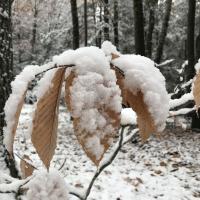
Autumn progresses one step back during this mild weekend, then leaps ahead all at once with wind-driven white when the first light snowfall arrives statewide. Snow and icicles linger after a thaw in rocky shadows of hemlock ravines.
Again, Robert Frost offers a view into the psyche of approaching winter:
The Onset
“Always the same, when on a fated night
At last the gathered snow lets down as white
As may be in dark woods, and with a song
It shall not make again all winter long
Of hissing on the yet uncovered ground,
I almost stumble looking up and round,
As one who overtaken by the end
Gives up his errand, and lets death descend
Upon him where he is, with nothing done
To evil, no important triumph won,
More than if life had never been begun…”
It felt that way when the first real dusting of snow — a half inch or more — coated lawns and some roads across NH last week from the Monadnock Region north and east through the Lakes Region and lingering overnight in the White Mountains. The first snowfall transforms the forest overnight to a stark black and white landscape painting where boughs bend gracefully and fine details of the forest floor are erased.

Winter isn’t negotiable. The first snow is a milestone and a stark reality check. Children play at catching snowflakes on their tongues or packing and hurling a first snowball. And while beautiful, it’s a shot across the bow for those unprepared. There’s no denying the need for boots, coats, hats and gloves. Pragmatic and stoic adults are concerned with new realities and practicalities. Its suddenly time for snow tires, ice scrapers, shovels and roof rakes. The first snowfall is generally quick to melt, a familiar fire drill which arrives weeks before the final curtain falls on autumn in December.
Marvel at these fitful transitions from “stick season” to a cliché snowy Currier and Ives print. Cue those sleigh bells.
But for warm weather fans, Frost consoles that winter won’t last forever:
“…Yet all the precedent is on my side:
I know that winter death has never tried
The earth but it has failed: the snow may heap
In long storms an undrifted four feet deep
As measured again maple, birch, and oak,
It cannot check the peeper’s silver croak;
And I shall see the snow all go down hill
In water of a slender April rill
That flashes tail through last year’s withered brake
And dead weeds, like a disappearing snake.
Nothing will be left white but here a birch,
And there a clump of houses with a church.”
But it’s far too soon to dream of springtime now…
unless you’ve already had more than enough of 2020?
